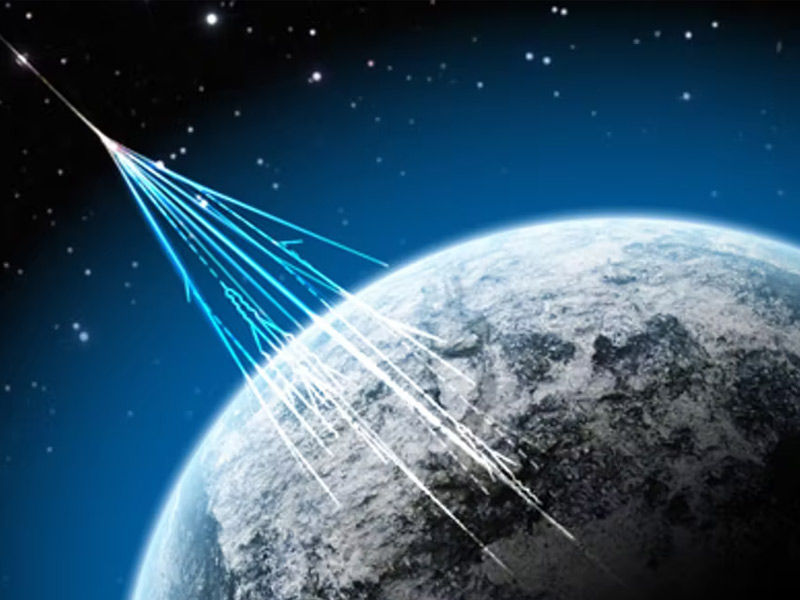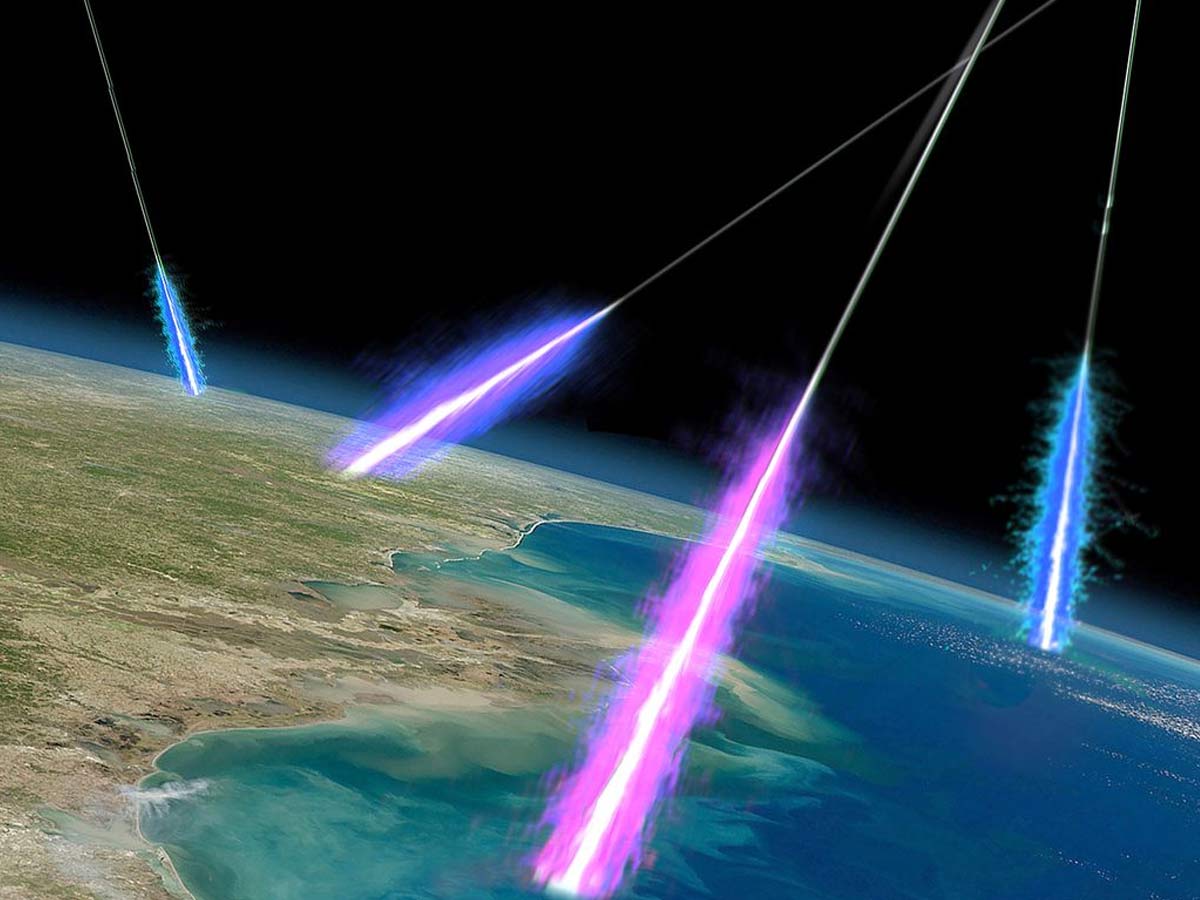High-energy particles coming from outside our solar system are called Cosmic Rays. They are essential for the creation of 14C in our atmosphere, which is used in radiocarbon dating, as well as the formation of cosmogenic nuclides in Earth’s surface rocks, which are used in cosmogenic nuclide dating.
Cosmic rays are sometimes called cosmic radiation too; these mostly comprise high-energy nucleons that are protons, neutrons and atomic nuclei. Approximately 90% are hydrogen nuclei (a single proton with an atomic number of one). They have been ionised as a result of losing their electrons.

Cosmic rays or cosmic radiation can travel at near to the speed of light through our galaxy. Their flight patterns are consistent across the galaxy, and they collide with the Earth at unpredictable angles. Cosmic rays are simply ordinary stuff that has been pushed to near light speed by supernova shock waves. The particles bounce around in the leftover anomaly’s magnetic field until they collect enough energy to depart the system, at which point they become cosmic rays.
Many aspects of cosmic rays, which were discovered in 1912, remain a mystery more than a century later. One great example exemplifies where they’re coming from. Most scientists believe they are caused by supernovas (star explosions), but the problem is that for many years, cosmic ray sources seemed uniform to observatories scanning the whole sky.
In 2017, the Pierre Auger Observatory (which spans 3,000 square kilometres, or 1,160 square miles) in western Argentina made a significant advance in cosmic ray physics by studying the arrival paths of 30,000 cosmic particles. It came to the conclusion that the frequency with which these cosmic rays come varies depending on where you look. While their origins are still unknown, knowing where to look is the first step towards determining where they come from, according to the experts. This information was reported in a scientific journal.
The Cosmic Rays Cascade

When cosmic rays impact with atoms in our atmosphere, they set off a chain of processes known as the “cosmic ray cascade.” The initial contact occurs when high-energy particles collide with upper-atmosphere nuclei. They produce a ‘spallation’ response. A spallation reaction occurs when a very energetic nucleon (often a secondary cosmic-ray neutron of energy) collides with a target nucleus. This results in the discharge of many particles (protons, neutrons, and clusters).
These particles set off a chain reaction of secondary interactions and spallation processes. As the accelerated particles collide with other atmospheric nuclei, they create a cascade of interactions in the upper atmosphere, resulting in more particles and high energy radiation. Photons are emitted in all directions, whereas particles continue on the same path. The atmosphere loses net energy.
The cosmic ray cascade is made up of three main parts:
- The mesonic element
- The electromechanical component.
- The hadronic element
The electromagnetic component of the main interaction is the second half of the primary interaction, where the muons decay further. When a cosmic ray collides with an atom, the resulting subatomic pions () and kaons (K) decay extremely immediately to yield muons () and photons (gamma rays) (). After that, the muons and gamma rays decay into electrons (e–) and positrons (e+).
Protons (p) and neutrons (n) make up the hadronic component (n). A hadron is a composite particle composed of quarks that are bound together by a strong force. Hadrons are made up of baryons (such as protons and neutrons) and mesons. Protons and neutrons are both stable elements. This part of the cosmic ray cascade is crucial for cosmogenic nuclide dating.
Also Read, Oxygen on Moon: Here is How you Can breathe on Moon…
Galactic cosmic rays are now known to be atom fragments such as protons (positively charged particles), electrons (negatively charged particles), and atomic nuclei. While we now know that cosmic rays can be produced by supernovae, additional sources of cosmic ray production may exist. It’s also unclear how supernovae are able to produce these cosmic rays so quickly.

While high-energy “primary” rays can crash with atoms in the Earth’s upper atmosphere and seldom make it through to the ground, “secondary” particles are expelled from this encounter and do reach us on the ground usually.
However, by the time these cosmic rays or radiations reach Earth, it is hard to determine where they came from. This is because their route was altered when they passed through various magnetic fields (the galaxy’s, the solar system’s, and Earth’s).
A NASA satellite discovered in 2016 that most cosmic rays are most likely emitted by (relatively) close groups of big stars. Using iron-60, a radioactive form of iron, the agency’s Advanced Composition Explorer (ACE) satellite identified cosmic rays. Because this sort of cosmic ray degrades with time, scientists estimate it must have originated no more than 3,000 light-years from Earth — the same distance of the Milky Way’s local spiral arm’s circumference.


























